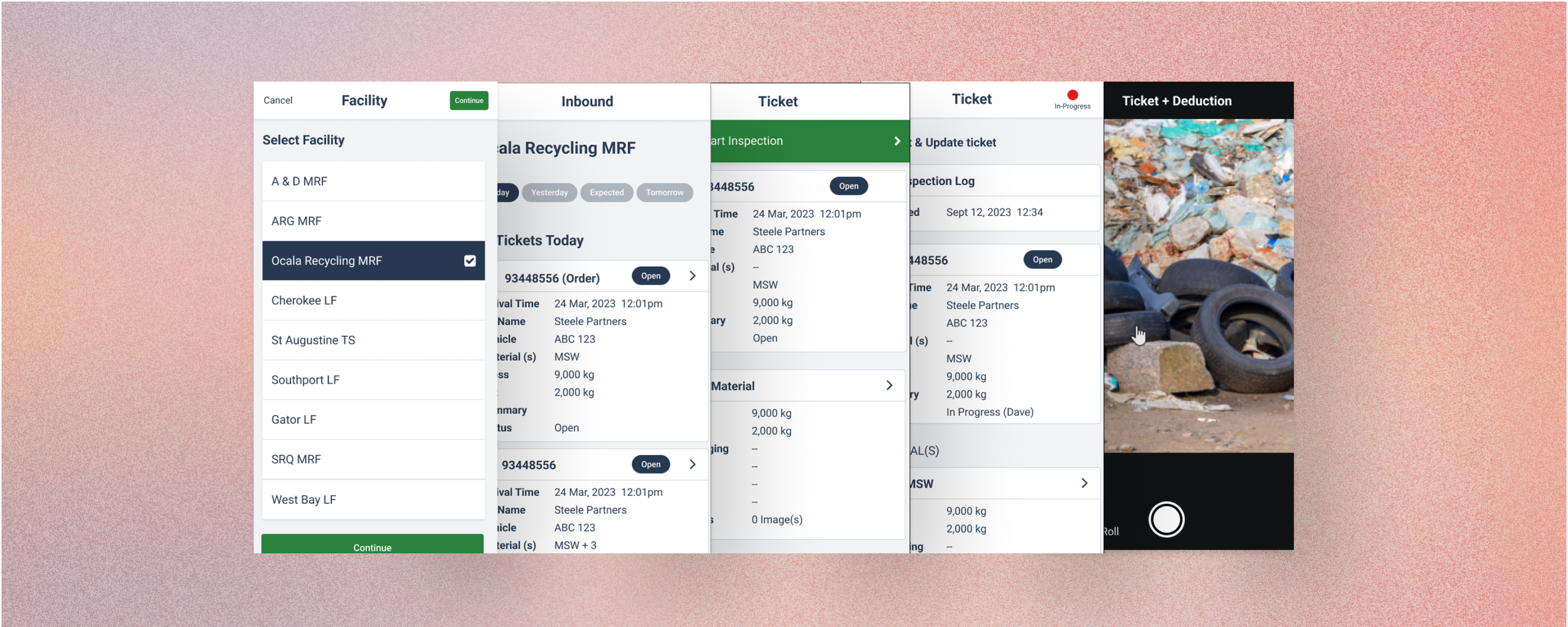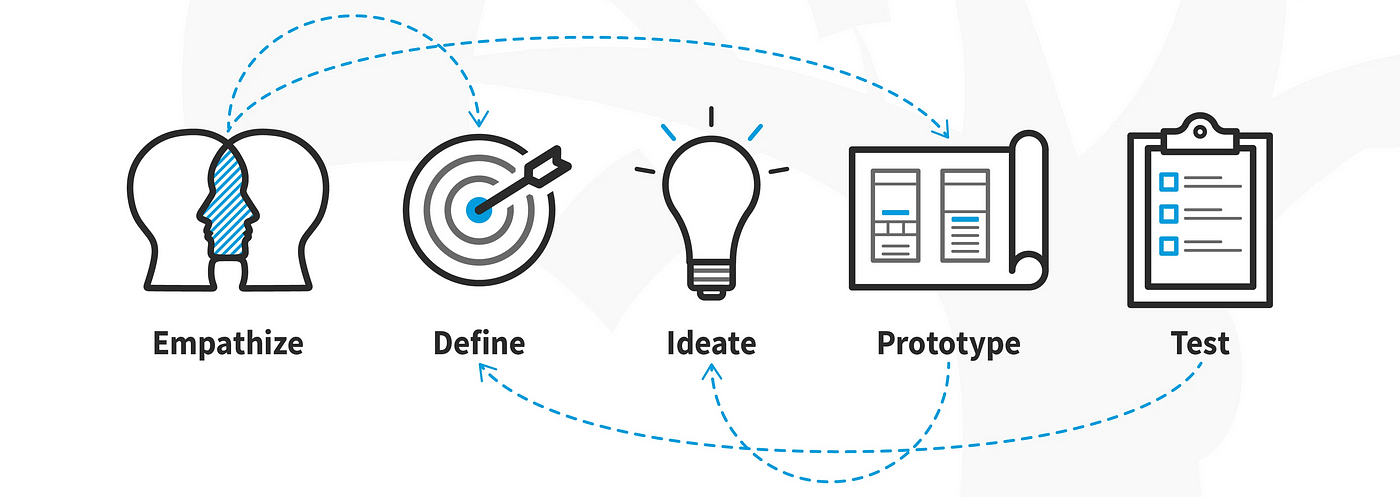Project Overview
The project focused on designing a secure, mobile Inspection App designed to streamline the inspection process of flagged tickets within waste & recycling facilities. The app allows users to inspect and adjust work order tickets efficiently. Key functionalities include changing materials, splitting materials into new categories, and making deductions with the ability to capture supporting images and comments. The app provides a structured workflow that guides users through the inspection process, ensuring accurate data capture and compliance with operational standards. Figma was my primary design tool.
Problem Statement
Waste & recycling facilities face challenges in managing and tracking the incoming & outgoing of waste & recycling effectively, leading to potential errors, inefficiencies, and delays in processing work orders. The lack of a streamlined digital solution results in inconsistencies in material adjustments, difficulties in tracking deductions, and a fragmented workflow. Those inspecting and overseeing said work needed a solution that could provide real time access to ticket details, facilitate accurate record keeping, and ensure smooth communication across different locations.
Solution Statement
The Inspection App design addresses these challenges by providing an intuitive, mobile-first solution that standardises the inspection workflow. The app offers a comprehensive feature set, including real-time facility selection, ticket filtering, and detailed inspection logs. Users can easily add deductions, split materials, and capture images for documentation purposes. With role-based access control and seamless navigation, the app enhances operational efficiency, reduces errors, and improves compliance across facilities.
Experience Map
Site Map
Low Fidelity Wireframes
Process:
Initial low-fidelity wireframes were created to map out core inspection workflows, focusing on ticket management, material adjustments, and deductions.
High-fidelity wireframes were developed based on stakeholder input, ensuring alignment with operational needs and optimising the user journey for clarity and efficiency.
Feedback:
User testing highlighted the need for clearer navigation between inspection steps and improved visibility of ticket statuses.
High Fidelity Wireframes
Refinements:
Navigation was streamlined by introducing clearer button hierarchy and intuitive filter options to quickly access different ticket states.
The material adjustment process was enhanced with improved visual indicators and guided inputs to minimise user confusion.
Impact: Improved inspection efficiency, reducing time spent on data entry and minimising errors.
Design Iterations
Major Changes:
Introduced progressive disclosure in the ticket details page to prevent information overload while maintaining access to critical data.
Improved touch-friendly controls based on feedback from field workers operating in challenging environments.
Added visual indicators to guide users through inspection workflows and highlight incomplete tasks.
Final Designs
The final product was a clean, intuitive design that supports quick navigation & efficient ticket management in high-pressure environments. Key highlights included:
Customisable filter options allowing users to tailor their view based on ticket status and inspection priorities.
Clear, actionable feedback messages to guide users and reduce potential errors.
Product Success
Increased efficiency in processing inspection tickets, reducing manual effort and turnaround time.
Positive feedback from stakeholders regarding the app’s ease of use and adaptability to site-specific needs.
Enhanced reporting capabilities leading to better operational insights and decision-making.
What I Learned
Small design tweaks, such as button placement and colour contrast, can have a significant impact on usability.
Flexibility in design is key when developing solutions for diverse operational environments.











